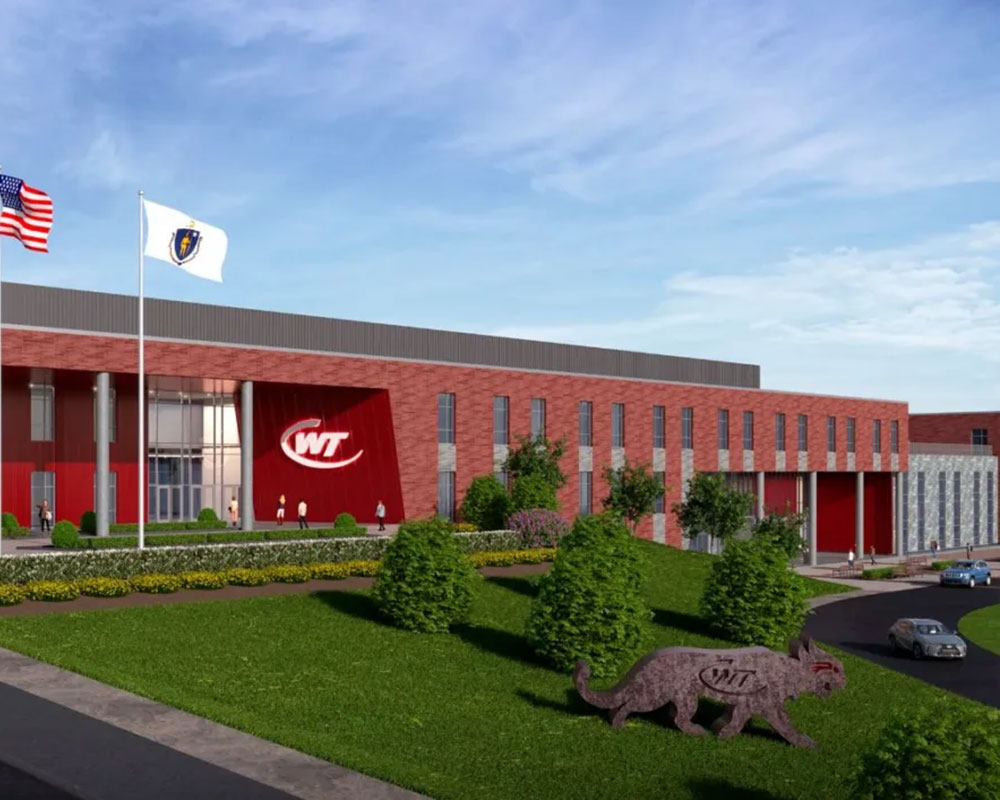
To submit election-related announcements, click on image or email [email protected]. These are the only acceptable methods of sending campaign news.
In the public interest, WHAV today presents in two parts, a series of fact checks to shed light on certain myths and little-known facts in advance of next week’s vote on the future of Whittier Regional Vocational Technical High School.
Part 1 of 2
Those who toured Whittier Tech this past weekend generally reported it to be well maintained. Some learned for first time that Whittier is not part of Haverhill Public Schools and did not suffer from deferred maintenance during the city’s Hale Hospital-driven financial crisis. They also were reminded the school was built before sprinklers were required, existing elevators are not compliant with today’s Americans with Disability Act, the football stadium isn’t being touched and, in fact, a competitive process was used to choose the project’s construction manager and other public bids—representing 90% of the total project cost, are yet to come.
As WHAV reported almost a year ago, a school building committee recommended a replacement school with a more than $400 million price tag. The proposal before voters next Tuesday is to pay for what is now estimated to be an estimated $444.6 million replacement school with a cost $267.5 million to be paid by the 11 member communities after grants and reimbursement by the state. School officials also released last week a revised $350 million estimate to renovate the school and bring it up to current building code.
During last month’s meeting of the Massachusetts School Building Authority, covered only by WHAV, then- Haverhill Mayor-elect Melinda E. Barrett called out Sen. Bruce E. Tarr and Newburyport Mayor Sean Reardon for requesting a delay that could have outright killed the project without the public’s input. Barrett told the board she believes Tarr’s and Reardon’s effort to stall state approval was merely an attempt to change the historical funding formula. Reardon appeared to reinforce her point, emphasizing how few students Newburyport currently sends to Whittier compared to Haverhill.
“Unfortunately, it’s going to pit a lot of these smaller cities and towns—I mean, Haverhill is four times larger than the next community that feeds into Whittier. So, for all of us smaller guys, that really just means Whittier’s education and what they do and their mission—whether it be a new school or a renovation—we have been left out of the process,” he said.
Since then, in a filing dated Jan. 7, a “Reimagine Whittier” Committee formed with Lisa Medina Smith of Newburyport as chairman and Scott Yewell of Newburyport as treasurer. The committee’s icon on social media urges residents to “Vote No.”
In a video, the group says the Whittier Tech School Committee “rushed” the long-planned Jan. 23 vote, approved the most expensive school ever to be proposed in Massachusetts and did not add student seats.
Here’s the reality.
First, in an age where people don’t get local news—either because it doesn’t exist in their communities or they choose not to seek it out, some are only now coming up to speed after a four-year public process that WHAV so reported. In fact, Whittier Tech Superintendent Maureen Lynch was quoted during January of 2020 as saying, “There is a very rigid timeline we have to follow.”
Second, part of the cost of the new school is driven by the lack of tradespeople, which is pushing construction payroll costs up. Haverhill recently made the same discovery in moving forward with plans to build a new $160 million Dr. Albert B. Consentino School.
Third, as Newburyport gradually strayed from its blue-collar roots, its students attending the school dropped from 165 to today’s 29. Statewide student enrollment is generally declining and the figure was one of the reasons given for not expanding the number of seats. Another reason given was to control not only the added cost of a larger building, but also an annual increase in operating costs to be paid by communities.
Fourth, a particular community’s experience is not necessarily true for the next city or town over, owing to whether a community has adopted tax classification or has differing average home values. For example, Haverhill makes commercial property owners pay a rate 65% higher than residential. The city will still pay the largest share of the proposed Whittier Tech replacement—estimated at $111.3 million—with an average annual homeowner tax increase of $279 for those living in the average $450,000 home. By comparison, Newburyport doesn’t shift its tax burden. Its share is estimated at $30.9 million, with a $239 average annual tax increase for those in the average $825,000 home. These numbers are based on whether the communities opt to seek a Proposition 2 ½ debt exclusion.
Voters in all 11 communities go to the polls next Tuesday. Polls will be open 11 a.m. to 7 p.m. A majority vote decides whether a replacement school moves forward. If voters reject the plan, Whittier Tech officials say they must make plans to renovate. They project required building code upgrades to total $316.8 million; wastewater treatment plant, $12.8 million; sprinkler system, $11.3 million; and new access road, $9.4 million. Opponents argue it simply means going back to the drawing board.
